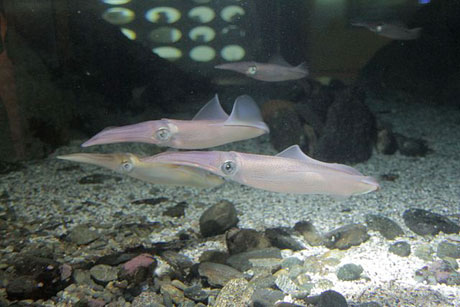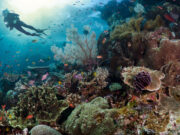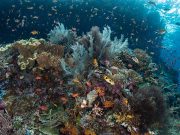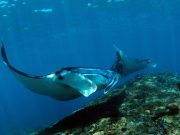That’s what I was asked last week. Found in Belgium, this jellyish mop-head was the size of a dinner plate.
The answer is a mass of squid eggs from the European, or Common, Squid (Loligo vulgaris).
Eggs from several mothers…
How the squid lays its eggs is fascinating. This bundle of eggs was not laid by one mother but by several. What happens is that the squid gather together at their mating spot. Males perform various displays to attract potential females, internally fertilizing them when accepted. The females then descend to the bottom and use their arms to deposit their egg capsules onto the communal egg mass. This egg mass is attached to a rock or other hard substrate on the sea floor.
…and many fathers
Some males spend considerable energy and time courting and defending individual females, and they have high mating success. Other smaller males behave more sneakily. A female’s egg capsule can contain eggs fertilized by two, three or even more males.
Each egg capsule has around 200 eggs in it. A female deposits 20 to 50 egg capsules at any one time. They can lay eggs in bouts several days or weeks apart.
Why were they on the beach?
The egg capsule masses are negatively bouyant which helps prevent them washing up onto shore should they become detached. Some still do though. Hatching takes place after about a month if the water is the right temperature.
Squid migrate to the coast to spawn. Spawning peaks in Spring, but this again depends on water temperature. The eggs need to be at between 12-24oC to develop.

Strong swimmers, squid use their fins to swim like fish and their siphon to propel themselves very quickly forwards or backwards.
Mollusca (Phylum) > Cephalopoda (Class) > Coleoidea (Subclass) > Decapodiformes (Superorder) > Myopsida (Order) > Loliginidae (Family) Loligo (Genus) > Loligo vulgaris (Species)
References
Hanlon, Roger. (1998). Mating systems and sexual selection in the squid Loligo: How might commercial fishing on spawning squids affect them?. California Cooperative Oceanic Fisheries Investigations Reports. 39. 92-100.
Ali Srairi et al, Reproduction of the squid Loligo vulgaris off the South Atlantic coast of Morocco
Vladimir Laptikhovsky et al, Spatial and temporal variability of spawning and nursery grounds of Loligo forbesii and Loligo vulgaris squids in ecoregions of Celtic Seas and Greater North Sea, ICES Journal of Marine Science, Volume 79, Issue 6, August 2022, Pages 1918-1930
Top photo by Lee Glasby.
















Found many groups of eggs on Dungeness beach Kent SE England